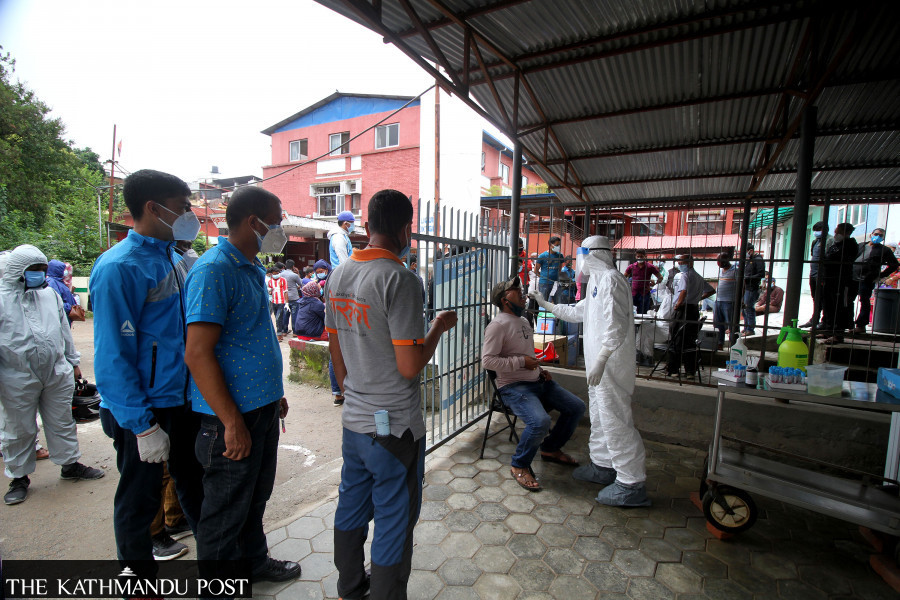Editorial
Resurging Covid-19
Let the surge serve as a reminder that we are not quite out of the woods yet.
In the days preceding Dashain, we witnessed an exodus of people from Kathmandu Valley, people wishing to reconnect with their loved ones and enjoy the festivities among warm, familiar surroundings. It was reported that more than 700,000 people left the valley. It was like old times again, but the negligence was quite evident. Images of people huddled together in buses were splashed across print media. But the repercussion of such close contact with Covid-19 positivity high enough to induce a spike was no cause for concern to the authorities or the public at large.
Now, with the hustle and bustle of Dashain behind us and life slowly picking up pace, we are beginning to see a clearer picture from the impact of neglecting Covid-19 safety protocol—primarily maintaining distance while using public transport. It is a hard act to follow, and it is easier said than done. But we all know the price of contracting the virus. What is bothersome is the repeated flouting of all protocols once the number of cases begins to wane. A false sense of confidence seems to dominate the psyche, pushing the authorities to make decisions according to their whims and fancies that defies logic based on facts and figures. We recently witnessed such work at play when the authorities were adamant about reopening the schools right before the holidays.
The positivity rate, which had dropped to around 6 percent on October 10, had surged to about 12 percent on October 19. It is no coincidence that 50 people infected with Covid-19 and all in serious condition were admitted on Wednesday, October 20, and are currently being treated at Teaching Hospital in Kathmandu. This recent surge clearly indicates that people's actions and behaviour often give us a false sense of security, but in fact, it is pretty divergent to ground reality. Multitudes have travelled without heeding any such safety protocols, and in all likeliness, they will travel back in the same way.
While it seemed, we were on track with the vaccination drive; it is of critical importance now to point out that the government failed to meet its share of the bargain. The Ministry of Health and Population had set its target to inoculate 33 percent of the total population before Dashain. Still, the figures reflected a measly 21.54 percent before the start of the holidays. And, when it was evident that they may fall short of their target, they casually revised the goal to 33 percent of the population aged 15 and older, which incidentally could not be fulfilled either.
The ramifications of missing vaccination targets should not in the least be taken lightly. Indeed, poorer countries haven’t had access to the vaccines they need, but fortunately, we have seen a regular flow of supplies in Nepal's context. Unable to inoculate puts us in danger of being exposed to the ever-mutating virus, which may wipe the slate clean of all the gains we have managed to amass so far. We can only hope that the recent surge is just a glitch. Nonetheless, let it serve as a reminder that we are not quite out of the woods yet, and cannot let our guard down for a moment.




 10.12°C Kathmandu
10.12°C Kathmandu














